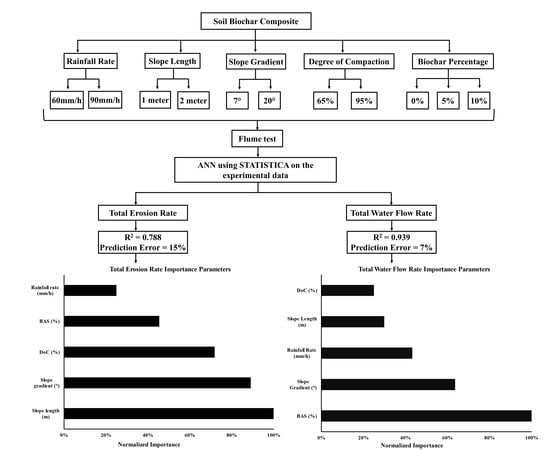Application of Artificial Intelligence for Predicting Erosion of Biochar Amended Soils
Abstract
:1. Introduction
2. Materials and Methodology
2.1. Experimental Program for Measurement of Erosion in the Soil-Biochar Mix Using Flume Setup
2.2. Test Plan and Procedure
2.3. Artificial Neural Network (ANN)
3. Results and Discussions
3.1. Influence of Degree of Compaction on Total Erosion Rate and Total Water Flow Rate
3.2. Influence of Rainfall Rate on Total Erosion Rate and Total Water Flow Rate
3.3. Influence of Slope Length on Total Erosion Rate and Total Water Flow Rate
3.4. Influence of Slope Gradient on Total Erosion Rate and Total Water Flow Rate
3.5. Influence of BAS on Total Erosion Rate and Total Water Flow Rate
3.6. Relative Importance of Factors Influencing Erosion
4. Conclusions
Author Contributions
Funding
Institutional Review Board Statement
Informed Consent Statement
Data Availability Statement
Conflicts of Interest
Abbreviations
| ANN | Artificial Neural Network |
| BAS | Biochar Amended Soils |
| CIF | Crack Intensity Factor |
| DoC | Degree of Compaction |
| EBC | European Biochar Certificate |
| FTIR | Fourier Transform Infrared |
| IBI | International Biochar Initiative |
| KNN | k-nearest neighbor |
| MAPD | Mean Absolute Percentage Deviation |
| SBC | Soil Biochar Composite |
| USEPA | United States Environmental Protection Agency |
| WHC | Water Holding Capacity |
| pH | Potential of Hydrogen |
| R2 | Coefficient of Determination |
| C | Carbon |
| H | Hydrogen |
| O | Oxygen |
References
- Holz, D.J.; Williard, K.W.J.; Edwards, P.J.; Schoonover, J.E. Soil Erosion in Humid Regions: A Review. J. Contemp. Water Res. Educ. 2015, 154, 48–59. [Google Scholar] [CrossRef]
- Jien, S.-H.; Wang, C.-S. Effects of Biochar on Soil Properties and Erosion Potential in a Highly Weathered Soil. CATENA 2013, 110, 225–233. [Google Scholar] [CrossRef] [Green Version]
- Li, Z.; Gu, C.; Zhang, R.; Ibrahim, M.; Zhang, G.; Wang, L.; Zhang, R.; Chen, F.; Liu, Y. The Benefic Effect Induced by Biochar on Soil Erosion and Nutrient Loss of Slopping Land under Natural Rainfall Conditions in Central China. Agric. Water Manag. 2017, 185, 145–150. [Google Scholar] [CrossRef]
- Materechera, S.A. Aggregation in a Surface Layer of a Hardsetting and Crusting Soil as Influenced by the Application of Amendments and Grass Mulch in a South African Semi-Arid Environment. Soil Tillage Res. 2009, 105, 251–259. [Google Scholar] [CrossRef]
- Wuddivira, M.N.; Stone, R.J.; Ekwue, E.I. Structural Stability of Humid Tropical Soils as Influenced by Manure Incorporation and Incubation Duration. Soil Sci. Soc. Am. J. 2009, 73, 1353–1360. [Google Scholar] [CrossRef]
- Garg, A.; Reddy, N.G.; Huang, H.; Buragohain, P.; Kushvaha, V. Modelling Contaminant Transport in Fly Ash–Bentonite Composite Landfill Liner: Mechanism of Different Types of Ions. Sci. Rep. 2020, 10, 11330. [Google Scholar] [CrossRef] [PubMed]
- Cai, W.; Huang, H.; Chen, P.; Huang, X.; Gaurav, S.; Pan, Z.; Lin, P. Effects of Biochar from Invasive Weed on Soil Erosion under Varying Compaction and Slope Conditions: Comprehensive Study Using Flume Experiments. Biomass Conv. Bioref. 2020. [Google Scholar] [CrossRef]
- Smith, D.D.; Wischmeier, W.H. Rainfall Erosion. In Advances in Agronomy; Norman, A.G., Ed.; Academic Press: Cambridge, MA, USA, 1962; Volume 14, pp. 109–148. [Google Scholar]
- Fox, D.M.; Bryan, R.B. The Relationship of Soil Loss by Interrill Erosion to Slope Gradient. CATENA 2000, 38, 211–222. [Google Scholar] [CrossRef]
- Neal, J.H. The Effect of the Degree of Slope and Rainfall Characteristics on Runoff and Soil Erosion. Soil Sci. Soc. Am. J. 1938, 2, 525–532. [Google Scholar] [CrossRef]
- Fullen, M.A. Compaction, Hydrological Processes and Soil Erosion on Loamy Sands in East Shropshire, England. Soil Tillage Res. 1985, 6, 17–29. [Google Scholar] [CrossRef]
- Batey, T. Soil Compaction and Soil Management—A Review. Soil Use Manag. 2009, 25, 335–345. [Google Scholar] [CrossRef]
- Li, Y.; Zhang, F.; Yang, M.; Zhang, J. Effects of Adding Biochar of Different Particle Sizes on Hydro-Erosional Processes in Small Scale Laboratory Rainfall Experiments on Cultivated Loessial Soil. CATENA 2019, 173, 226–233. [Google Scholar] [CrossRef]
- Verheijen, F.G.A.; Jones, R.J.A.; Rickson, R.J.; Smith, C.J. Tolerable versus Actual Soil Erosion Rates in Europe. Earth-Sci. Rev. 2009, 94, 23–38. [Google Scholar] [CrossRef] [Green Version]
- Ledermann, T.; Herweg, K.; Liniger, H.P.; Schneider, F.; Hurni, H.; Prasuhn, V. Applying Erosion Damage Mapping to Assess and Quantify Off-Site Effects of Soil Erosion in Switzerland. Land Degrad. Dev. 2010, 21, 353–366. [Google Scholar] [CrossRef]
- Yang, X.; Zhang, X.; Lv, D.; Yin, S.; Zhang, M.; Zhu, Q.; Yu, Q.; Liu, B. Remote Sensing Estimation of the Soil Erosion Cover-Management Factor for China’s Loess Plateau. Land Degrad. Dev. 2020, 31, 1942–1955. [Google Scholar] [CrossRef]
- Swift, L.W. Gravel and Grass Surfacing Reduces Soil Loss from Mountain Roads. For Sci. 1984, 30, 657–670. [Google Scholar] [CrossRef]
- Quinton, J.N.; Edwards, G.M.; Morgan, R.P.C. The Influence of Vegetation Species and Plant Properties on Runoff and Soil Erosion: Results from a Rainfall Simulation Study in South East Spain. Soil Use Manag. 1997, 13, 143–148. [Google Scholar] [CrossRef]
- Loch, R.J. Effects of Vegetation Cover on Runoff and Erosion under Simulated Rain and Overland Flow on a Rehabilitated Site on the Meandu Mine, Tarong, Queensland. Soil Res. 2000, 38, 299–312. [Google Scholar] [CrossRef]
- Bissonnais, Y.L.; Lecomte, V.; Cerdan, O. Grass Strip Effects on Runoff and Soil Loss. Agronomie 2004, 24, 129–136. [Google Scholar] [CrossRef]
- Raya, A.M.; Zuazo, V.H.D.; Martínez, J.R.F. Soil Erosion and Runoff Response to Plant-Cover Strips on Semiarid Slopes (SE Spain). Land Degrad. Dev. 2006, 17, 1–11. [Google Scholar] [CrossRef]
- Winteraeken, H.J.; Spaan, W.P. A New Approach to Soil Erosion and Runoff in South Limburg—The Netherlands. Land Degrad. Dev. 2010, 21, 346–352. [Google Scholar] [CrossRef]
- Zhuang, Y.; Zhang, L.; Du, Y.; Yang, W.; Wang, L.; Cai, X. Identification of Critical Source Areas for Nonpoint Source Pollution in the Danjiangkou Reservoir Basin, China. Lake Reserv. Manag. 2016, 32, 341–352. [Google Scholar] [CrossRef]
- Kuoppamäki, K.; Hagner, M.; Lehvävirta, S.; Setälä, H. Biochar Amendment in the Green Roof Substrate Affects Runoff Quality and Quantity. Ecol. Eng. 2016, 88, 1–9. [Google Scholar] [CrossRef]
- Sadeghi, S.H.; Hazbavi, Z.; Harchegani, M.K. Controllability of Runoff and Soil Loss from Small Plots Treated by Vinasse-Produced Biochar. Sci. Total Environ. 2016, 541, 483–490. [Google Scholar] [CrossRef] [PubMed]
- Lehmann, J.; Rillig, M.C.; Thies, J.; Masiello, C.A.; Hockaday, W.C.; Crowley, D. Biochar Effects on Soil Biota – A Review. Soil Biol. Biochem. 2011, 43, 1812–1836. [Google Scholar] [CrossRef]
- Mohan, D.; Sarswat, A.; Ok, Y.S.; Pittman, C.U. Organic and Inorganic Contaminants Removal from Water with Biochar, a Renewable, Low Cost and Sustainable Adsorbent – A Critical Review. Bioresour. Technol. 2014, 160, 191–202. [Google Scholar] [CrossRef]
- Tripathi, M.K.; Sahu, J.N.; Ganesan, P.B. Effect of Process Parameters on Production of Biochar from Biomass Waste through Pyrolysis: A Review. Renew. Sustain. Energy Rev. 2016, 55, 467–481. [Google Scholar] [CrossRef]
- Xia, L.; Wang, Y.; Meng, J.; Chen, W.; Zhang, Z. The Influencing Factors of Biochar’s Characteristics and the Development of Carbonization Equipments: A Review. In Proceedings of the Geo-Informatics in Resource Management and Sustainable Ecosystem; Bian, F., Xie, Y., Eds.; Springer: Berlin/Heidelberg, Germany, 2016; pp. 760–769. [Google Scholar]
- Garg, A.; Huang, H.; Kushvaha, V.; Madhushri, P.; Kamchoom, V.; Wani, I.; Koshy, N.; Zhu, H.-H. Mechanism of Biochar Soil Pore–Gas–Water Interaction: Gas Properties of Biochar-Amended Sandy Soil at Different Degrees of Compaction Using KNN Modeling. Acta Geophys. 2019, 68, 207–217. [Google Scholar] [CrossRef]
- Huang, H.; Cai, W.-L.; Zheng, Q.; Chen, P.-N.; Huang, C.-R.; Zeng, Q.-J.; Kumar, H.; Zhu, H.-H.; Garg, A.; Zheenbek, K.; et al. Gas Permeability in Soil Amended with Biochar at Different Compaction States. IOP Conf. Ser.: Earth Environ. Sci. 2020, 463, 012073. [Google Scholar] [CrossRef]
- Wani, I.; Kumar, H.; Rangappa, S.M.; Peng, L.; Siengchin, S.; Kushvaha, V. Multiple Regression Model for Predicting Cracks in Soil Amended with Pig Manure Biochar and Wood Biochar. J. Hazard. Toxic Radioact. Waste 2021, 25, 04020061. [Google Scholar] [CrossRef]
- Wani, I.; Sharma, A.; Kushvaha, V.; Madhushri, P.; Peng, L. Effect of PH, Volatile Content, and Pyrolysis Conditions on Surface Area and O/C and H/C Ratios of Biochar: Towards Understanding Performance of Biochar Using Simplified Approach. J. Hazard. Toxic Radioact. Waste 2020, 24, 04020048. [Google Scholar] [CrossRef]
- Wani, I.; Ramola, S.; Garg, A.; Kushvaha, V. Critical Review of Biochar Applications in Geoengineering Infrastructure: Moving beyond Agricultural and Environmental Perspectives. Biomass Conv. Bioref. 2021, 1–29. [Google Scholar] [CrossRef]
- Wani, I.; Narde, S.R.; Huang, X.; Remya, N.; Kushvaha, V.; Garg, A. Reviewing Role of Biochar in Controlling Soil Erosion and Considering Future Aspect of Production Using Microwave Pyrolysis Process for the Same. Biomass Conv. Bioref. 2021, 1–27. [Google Scholar] [CrossRef]
- Kumar, H.; Ganesan, S.P.; Bordoloi, S.; Sreedeep, S.; Lin, P.; Mei, G.; Garg, A.; Sarmah, A.K. Erodibility Assessment of Compacted Biochar Amended Soil for Geo-Environmental Applications. Sci. Total Environ. 2019, 672, 698–707. [Google Scholar] [CrossRef]
- Lee, S.S.; Shah, H.S.; Awad, Y.M.; Kumar, S.; Ok, Y.S. Synergy Effects of Biochar and Polyacrylamide on Plants Growth and Soil Erosion Control. Environ. Earth Sci 2015, 74, 2463–2473. [Google Scholar] [CrossRef]
- Li, Y.; Zhang, F.; Yang, M.; Zhang, J.; Xie, Y. Impacts of Biochar Application Rates and Particle Sizes on Runoff and Soil Loss in Small Cultivated Loess Plots under Simulated Rainfall. Sci. Total Environ. 2019, 649, 1403–1413. [Google Scholar] [CrossRef] [PubMed]
- Abel, S.; Peters, A.; Trinks, S.; Schonsky, H.; Facklam, M.; Wessolek, G. Impact of Biochar and Hydrochar Addition on Water Retention and Water Repellency of Sandy Soil. Geoderma 2013, 202–203, 183–191. [Google Scholar] [CrossRef]
- Ouyang, L.; Wang, F.; Tang, J.; Yu, L.; Zhang, R. Effects of Biochar Amendment on Soil Aggregates and Hydraulic Properties. J. Soil Sci. Plant Nutr. 2013, 13, 991–1002. [Google Scholar] [CrossRef] [Green Version]
- Bordoloi, S.; Garg, A.; Sreedeep, S.; Lin, P.; Mei, G. Investigation of Cracking and Water Availability of Soil-Biochar Composite Synthesized from Invasive Weed Water Hyacinth. Bioresour. Technol. 2018, 263, 665–677. [Google Scholar] [CrossRef] [PubMed]
- Gopal, P.; Bordoloi, S.; Ratnam, R.; Lin, P.; Cai, W.; Buragohain, P.; Garg, A.; Sreedeep, S. Investigation of Infiltration Rate for Soil-Biochar Composites of Water Hyacinth. Acta Geophys. 2019, 67, 231–246. [Google Scholar] [CrossRef]
- Doan, T.T.; Henry-des-Tureaux, T.; Rumpel, C.; Janeau, J.-L.; Jouquet, P. Impact of Compost, Vermicompost and Biochar on Soil Fertility, Maize Yield and Soil Erosion in Northern Vietnam: A Three Year Mesocosm Experiment. Sci. Total Environ. 2015, 514, 147–154. [Google Scholar] [CrossRef] [PubMed]
- Abrol, V.; Ben-Hur, M.; Verheijen, F.G.A.; Keizer, J.J.; Martins, M.A.S.; Tenaw, H.; Tchehansky, L.; Graber, E.R. Biochar Effects on Soil Water Infiltration and Erosion under Seal Formation Conditions: Rainfall Simulation Experiment. J. Soils Sediments 2016, 16, 2709–2719. [Google Scholar] [CrossRef]
- Kushvaha, V.; Kumar, S.A.; Madhushri, P. Dynamic Fracture Toughness Index: A New Integrated Methodology for Mode-I Fracture Behaviour of Polymer Composite under Impact Loading. Mater. Res. Express 2019, 6, 115342. [Google Scholar] [CrossRef]
- Sharma, A.; Madhushri, P.; Kushvaha, V.; Kumar, A. Prediction of the Fracture Toughness of Silicafilled Epoxy Composites Using K-Nearest Neighbor (KNN) Method. In Proceedings of the 2020 International Conference on Computational Performance Evaluation (ComPE), Shillong, India, 2–4 July 2020; pp. 194–198. [Google Scholar]
- Kushvaha, V.; Kumar, S.A.; Madhushri, P.; Sharma, A. Artificial Neural Network Technique to Predict Dynamic Fracture of Particulate Composite. J. Compos. Mater. 2020, 54, 3099–3108. [Google Scholar] [CrossRef]
- Sharma, A.; Anand Kumar, S.; Kushvaha, V. Effect of Aspect Ratio on Dynamic Fracture Toughness of Particulate Polymer Composite Using Artificial Neural Network. Eng. Fract. Mech. 2020, 228, 106907. [Google Scholar] [CrossRef]
- Sharma, A.; Kushvaha, V. Predictive Modelling of Fracture Behaviour in Silica-Filled Polymer Composite Subjected to Impact with Varying Loading Rates Using Artificial Neural Network. Eng. Fract. Mech. 2020, 239, 107328. [Google Scholar] [CrossRef]
- Sharma, A.; Mukhopadhyay, T.; Rangappa, S.M.; Siengchin, S.; Kushvaha, V. Advances in Computational Intelligence of Polymer Composite Materials: Machine Learning Assisted Modeling. Anal. Des. 2021. [Google Scholar] [CrossRef]
- Garg, A.; Wani, I.; Zhu, H.; Kushvaha, V. Exploring Efficiency of Biochar in Enhancing Water Retention in Soils with Varying Grain Size Distributions Using ANN Technique. Acta Geotech. 2021, 1–12. [Google Scholar] [CrossRef]
- Bordoloi, S.; Gopal, P.; Boddu, R.; Wang, Q.; Cheng, Y.-F.; Garg, A.; Sreedeep, S. Soil-Biochar-Water Interactions: Role of Biochar from Eichhornia Crassipes in Influencing Crack Propagation and Suction in Unsaturated Soils. J. Clean. Prod. 2019, 210, 847–859. [Google Scholar] [CrossRef]
- Arif, N.; Danoedoro, P. Hartono Analysis of Artificial Neural Network in Erosion Modeling: A Case Study of Serang Watershed. IOP Conf. Ser. Earth Environ. Sci. 2017, 98, 012027. [Google Scholar] [CrossRef] [Green Version]
- Suliman, W.; Harsh, J.B.; Abu-Lail, N.I.; Fortuna, A.-M.; Dallmeyer, I.; Garcia-Perez, M. Influence of Feedstock Source and Pyrolysis Temperature on Biochar Bulk and Surface Properties. Biomass Bioenergy 2016, 84, 37–48. [Google Scholar] [CrossRef]
- Li, Y.; Ruan, G.; Jalilov, A.S.; Tarkunde, Y.R.; Fei, H.; Tour, J.M. Biochar as a Renewable Source for High-Performance CO2 Sorbent. Carbon 2016, 107, 344–351. [Google Scholar] [CrossRef]
- Poulsen, T.G.; Cai, W.; Garg, A. Water Evaporation from Cracked Soil under Moist Conditions as Related to Crack Properties and Near-Surface Wind Speed. Eur. J. Soil Sci. 2020, 71, 627–640. [Google Scholar] [CrossRef]
- Cuomo, S.; Della Sala, M.; Pierri, M. Experimental Evidences and Numerical Modelling of Runoff and Soil Erosion in Flume Tests. CATENA 2016, 147, 61–70. [Google Scholar] [CrossRef]
- Zhao, Q.; Li, D.; Zhuo, M.; Guo, T.; Liao, Y.; Xie, Z. Effects of Rainfall Intensity and Slope Gradient on Erosion Characteristics of the Red Soil Slope. Stoch. Environ. Res. Risk Assess. 2015, 29, 609–621. [Google Scholar] [CrossRef]
- Aksoy, H.; Gedikli, A.; Yilmaz, M.; Eris, E.; Unal, N.E.; Yoon, J.; Kavvas, M.L.; Tayfur, G. Soil Erosion Model Tested on Experimental Data of a Laboratory Flume with a Pre-Existing Rill. J. Hydrol. 2020, 581, 124391. [Google Scholar] [CrossRef]
- Ran, Q.; Su, D.; Li, P.; He, Z. Experimental Study of the Impact of Rainfall Characteristics on Runoff Generation and Soil Erosion. J. Hydrol. 2012, 424–425, 99–111. [Google Scholar] [CrossRef]
- TIBCO® Data Science. Available online: https://www.tibco.com/products/data-science (accessed on 2 January 2022).
- Maier, H.R.; Dandy, G.C. Neural Networks for the Prediction and Forecasting of Water Resources Variables: A Review of Modelling Issues and Applications. Environ. Model. Softw. 2000, 15, 101–124. [Google Scholar] [CrossRef]
- Albaradeyia, I.; Hani, A.; Shahrour, I. WEPP and ANN Models for Simulating Soil Loss and Runoff in a Semi-Arid Mediterranean Region. Environ. Monit Assess. 2011, 180, 537–556. [Google Scholar] [CrossRef]
- Chukwuka, K.S.; Alimba, C.G.; Ataguba, G.A.; Jimoh, W.A. Chapter 9 - The Impacts of Petroleum Production on Terrestrial Fauna and Flora in the Oil-Producing Region of Nigeria. In The Political Ecology of Oil and Gas Activities in the Nigerian Aquatic Ecosystem; Ndimele, P.E., Ed.; Academic Press: Cambridge, MA, USA, 2018; pp. 125–142. ISBN 978-0-12-809399-3. [Google Scholar]
- Garg, A.; Huang, H.; Cai, W.; Reddy, N.G.; Chen, P.; Han, Y.; Kamchoom, V.; Gaurav, S.; Zhu, H.-H. Influence of Soil Density on Gas Permeability and Water Retention in Soils Amended with In-House Produced Biochar. J. Rock Mech. Geotech. Eng. 2021, 13, 593–602. [Google Scholar] [CrossRef]
- Fu, X.T.; Zhang, L.P.; Wang, Y. Effect of Slope Length and Rainfall Intensity on Runoff and Erosion Conversion from Laboratory to Field. Water Resour 2019, 46, 530–541. [Google Scholar] [CrossRef]
- Las Heras, M.M.; Nicolau, J.M.; Merino-Martín, L.; Wilcox, B.P. Plot-Scale Effects on Runoff and Erosion along a Slope Degradation Gradient. Water Resour. Res. 2010, 46. [Google Scholar] [CrossRef] [Green Version]
- Jakub, S. Land use, soil conservation and rain harvesting structures on a slope land orchard at sufen (taiwan) during of action of typhoon herb–elementary numerical experiment. Agricultura Tropica Subtropica 2011, 44, 22–29. [Google Scholar]
- Parker, D.B.; Michel, T.G.; Smith, J.L. Compaction and Water Velocity Effects on Soil Erosion in Shallow Flow. J. Irrig. Drain. Eng. 1995, 121, 170–178. [Google Scholar] [CrossRef]
- Ekwue, E.I.; Harrilal, A. Effect of Soil Type, Peat, Slope, Compaction Effort and Their Interactions on Infiltration, Runoff and Raindrop Erosion of Some Trinidadian Soils. Biosyst. Eng. 2010, 105, 112–118. [Google Scholar] [CrossRef]
- Zhao, X.; Huang, J.; Gao, X.; Wu, P.; Wang, J. Runoff Features of Pasture and Crop Slopes at Different Rainfall Intensities, Antecedent Moisture Contents and Gradients on the Chinese Loess Plateau: A Solution of Rainfall Simulation Experiments. CATENA 2014, 119, 90–96. [Google Scholar] [CrossRef]
- Huang, X.; Niu, R.; Huang, X.; An, Y.; Li, J.; Li, M.; Huang, H.; Garg, A. Influence of Sustainable Biochars Produced from Kitchen Waste, Pig Manure, and Wood on Soil Erosion. Water 2021, 13, 2296. [Google Scholar] [CrossRef]
- Alburquerque, J.A.; Calero, J.M.; Barrón, V.; Torrent, J.; del Campillo, M.C.; Gallardo, A.; Villar, R. Effects of Biochars Produced from Different Feedstocks on Soil Properties and Sunflower Growth. J. Plant. Nutr. Soil Sci. 2014, 177, 16–25. [Google Scholar] [CrossRef]
- Chan, K.Y.; Zwieten, L.V.; Meszaros, I.; Downie, A.; Joseph, S. Using Poultry Litter Biochars as Soil Amendments. Soil Res. 2008, 46, 437–444. [Google Scholar] [CrossRef]
- Lal, R. Effect of Slope Length, Slope, Gradient, Tillage Methods and Cropping Systems and Run-off and Soil Erosion on a Tropical Alfisol: Preliminary Results. IAHS Publ 1988, 174, 79–88. [Google Scholar]
- Lei, O.; Zhang, R. Effects of Biochars Derived from Different Feedstocks and Pyrolysis Temperatures on Soil Physical and Hydraulic Properties. J. Soils Sediments 2013, 13, 1561–1572. [Google Scholar] [CrossRef]
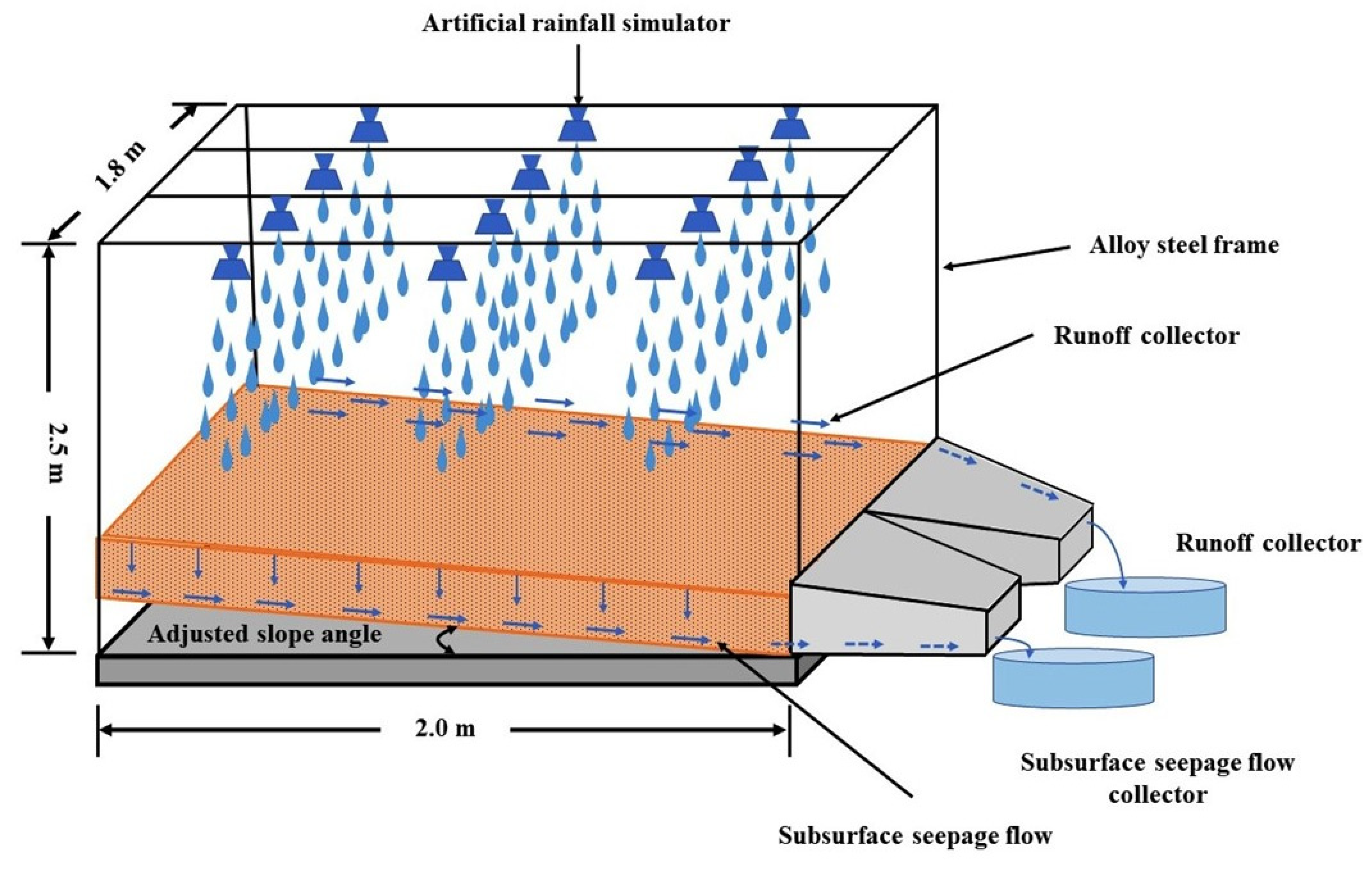
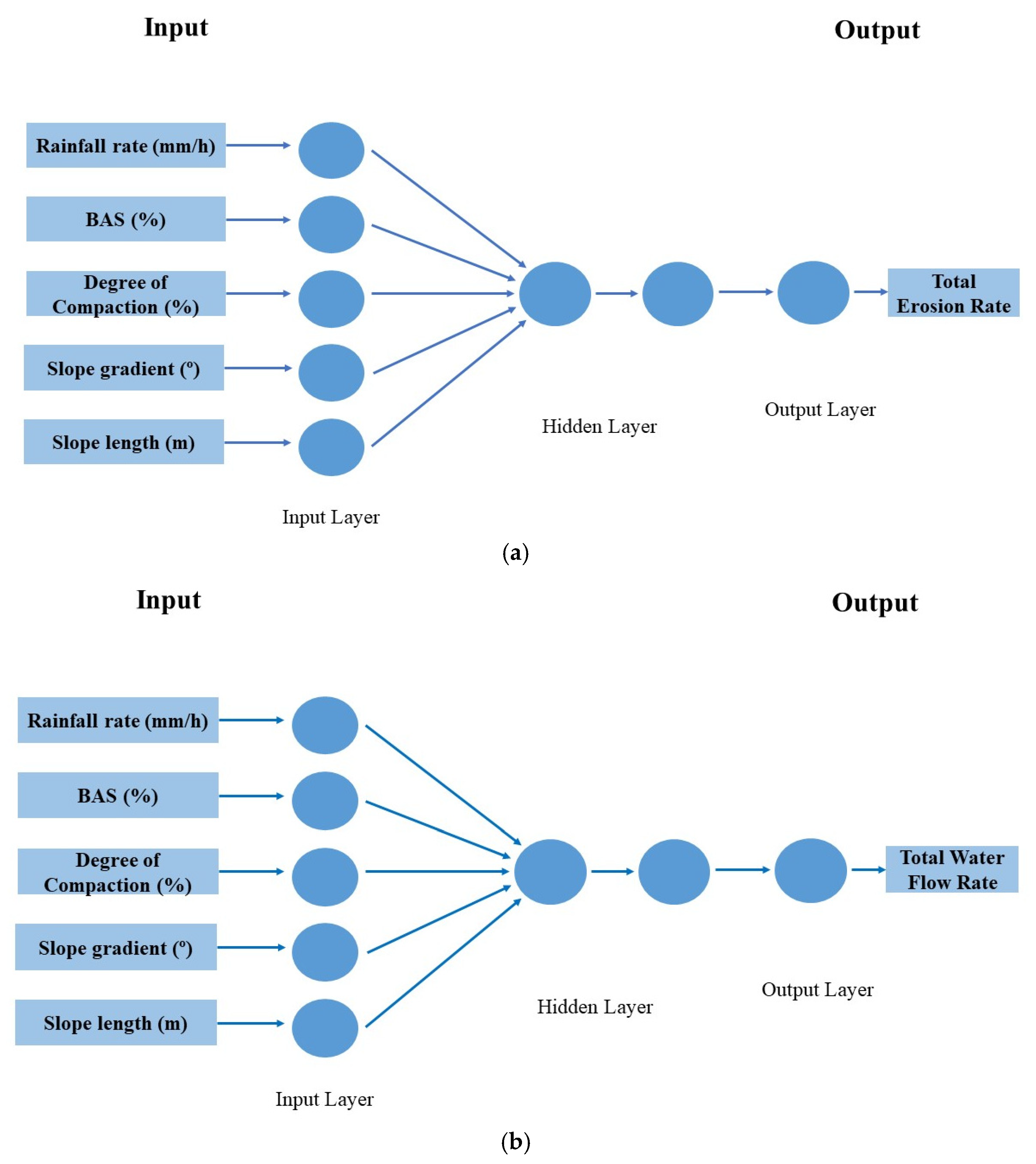


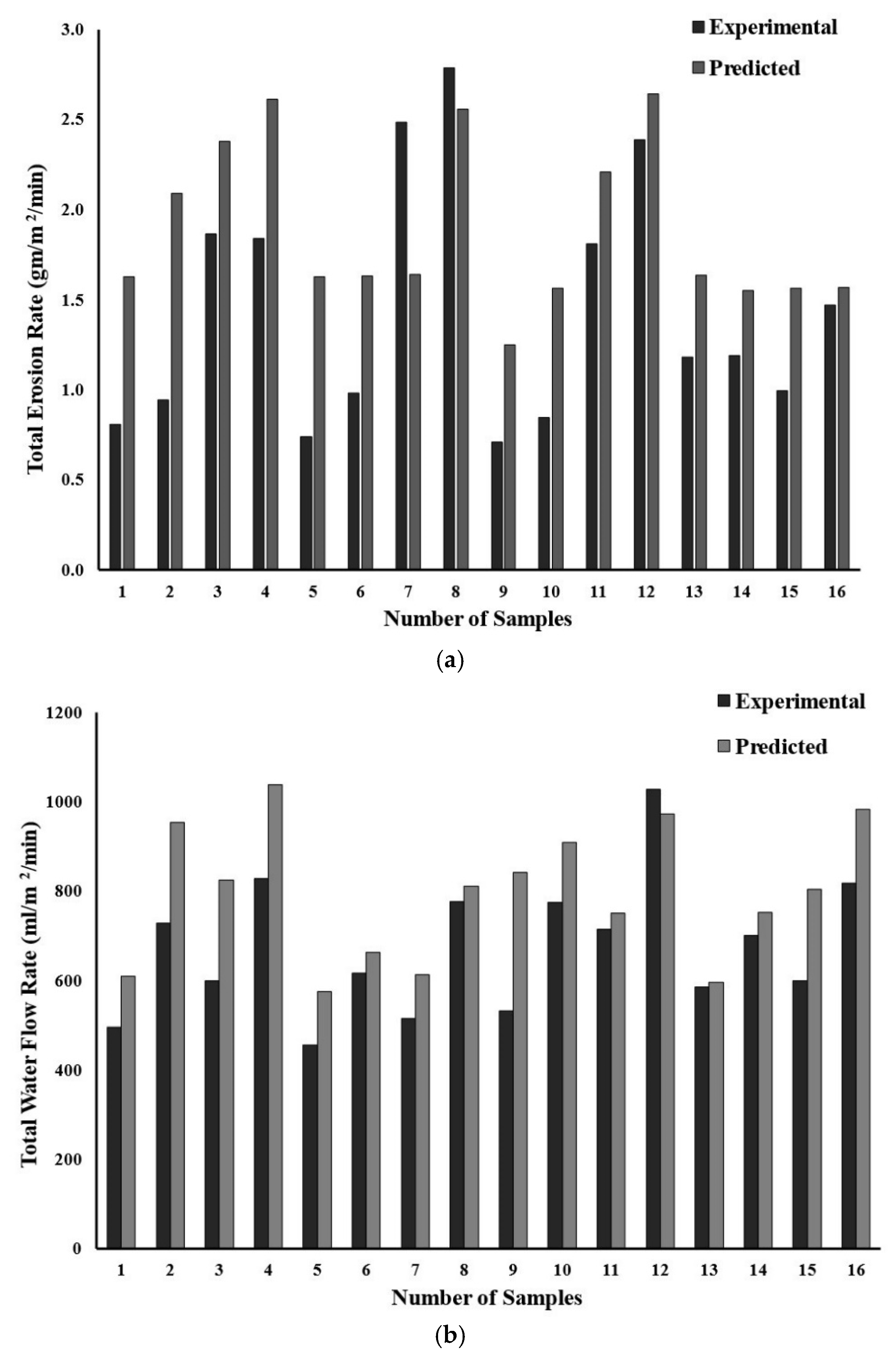
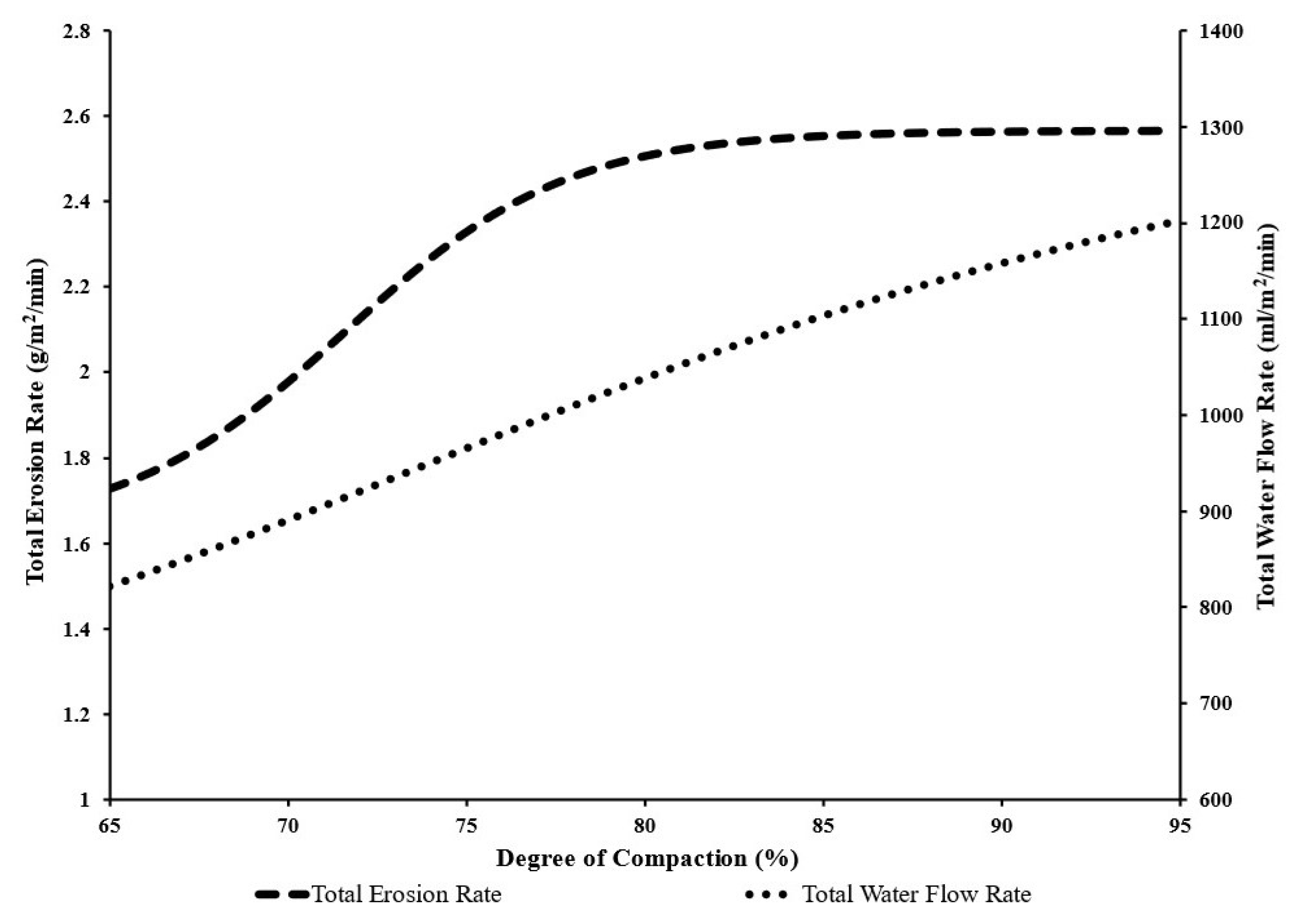

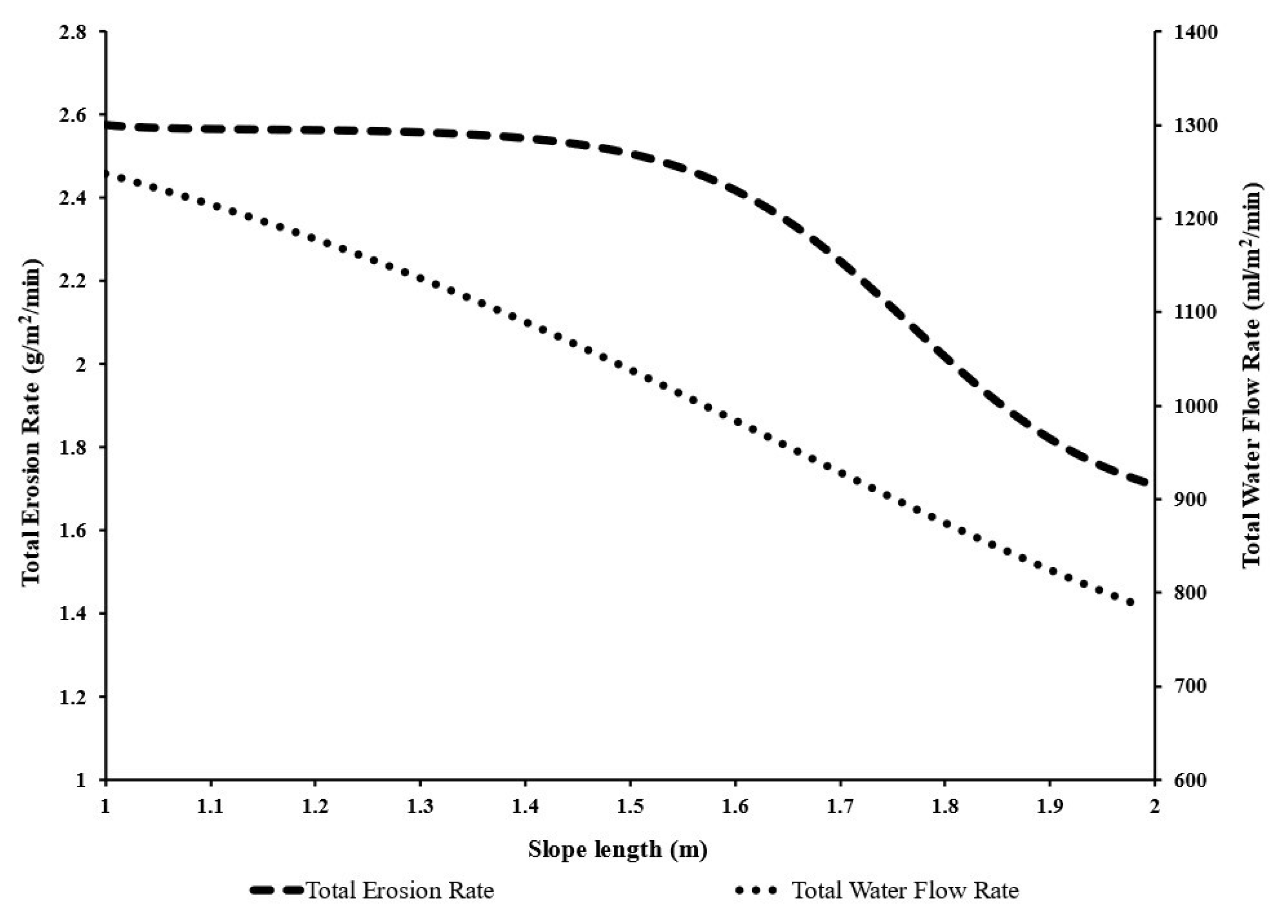

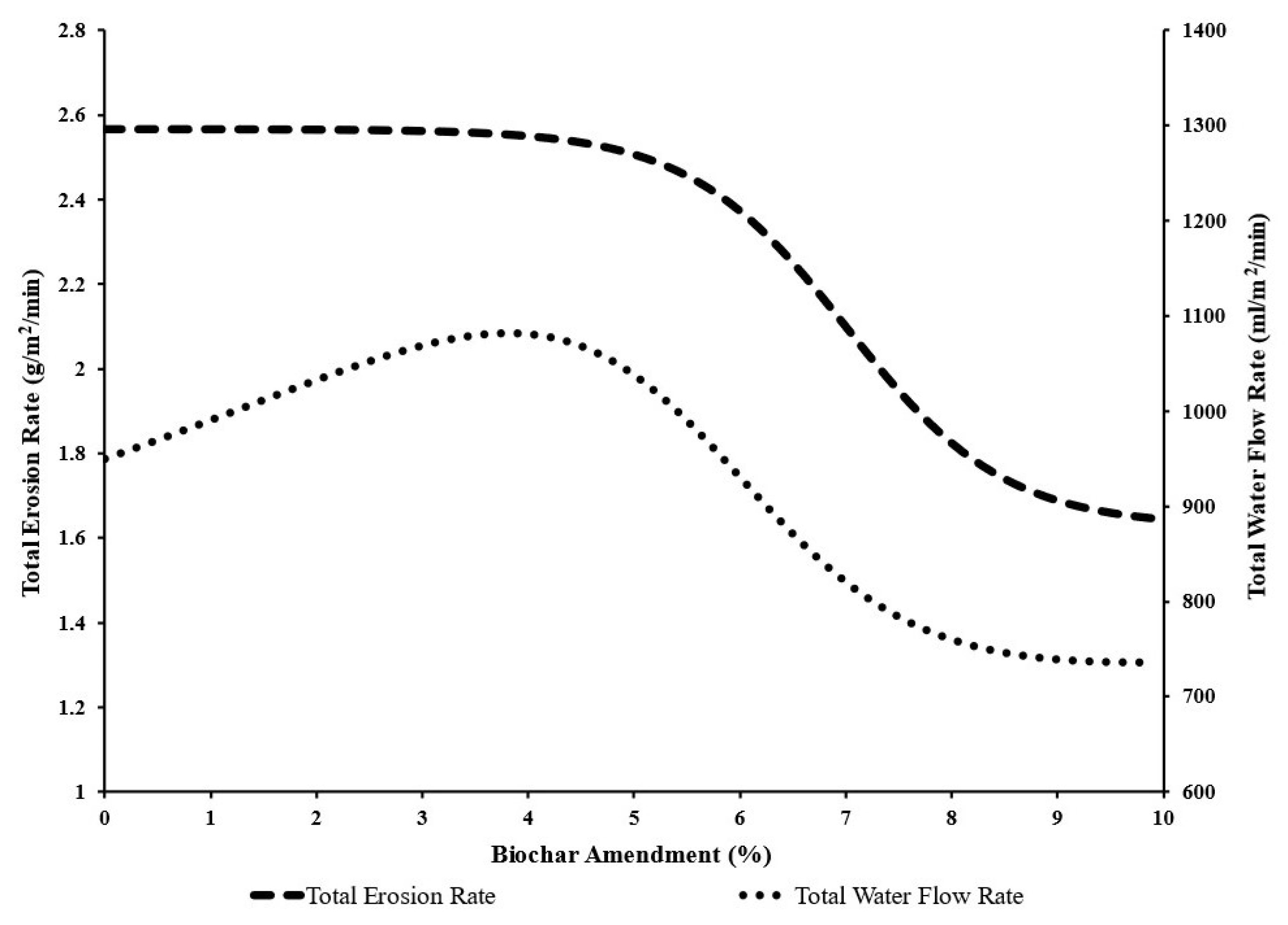

Publisher’s Note: MDPI stays neutral with regard to jurisdictional claims in published maps and institutional affiliations. |
© 2022 by the authors. Licensee MDPI, Basel, Switzerland. This article is an open access article distributed under the terms and conditions of the Creative Commons Attribution (CC BY) license (https://creativecommons.org/licenses/by/4.0/).
Share and Cite
Garg, A.; Wani, I.; Kushvaha, V. Application of Artificial Intelligence for Predicting Erosion of Biochar Amended Soils. Sustainability 2022, 14, 684. https://doi.org/10.3390/su14020684
Garg A, Wani I, Kushvaha V. Application of Artificial Intelligence for Predicting Erosion of Biochar Amended Soils. Sustainability. 2022; 14(2):684. https://doi.org/10.3390/su14020684
Chicago/Turabian StyleGarg, Ankit, Insha Wani, and Vinod Kushvaha. 2022. "Application of Artificial Intelligence for Predicting Erosion of Biochar Amended Soils" Sustainability 14, no. 2: 684. https://doi.org/10.3390/su14020684
APA StyleGarg, A., Wani, I., & Kushvaha, V. (2022). Application of Artificial Intelligence for Predicting Erosion of Biochar Amended Soils. Sustainability, 14(2), 684. https://doi.org/10.3390/su14020684






